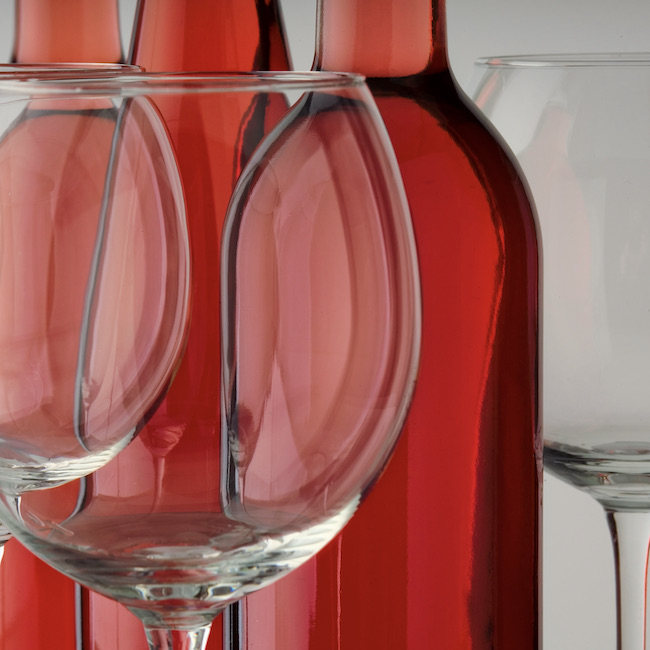.png.transform/rendition-xs/image_image%20(1).png)
Japanese Cuisine, Spanish Wines: a Winning Combination
David Arauz and Álvaro Prieto, from Zuara Sushi restaurant (1 Michelin star, Madrid), show us the possibilities of pairing the two gastronomic cultures
Haute cuisine has been on the menu for more than a decade at 20 Pensamiento Street in Madrid. This restaurant, which once housed Dabiz Muñoz's DiverXO, once again has a Michelin star thanks to the work of David Arauz (chef) and Álvaro Prieto (maître d' and sommelier). They are the duo that helms the Zuara Sushi project, a Japanese restaurant where Arauz's goal is for "the product to establish the flavors through an interpretation basedon knowledge."
"I really like the minerality of the matured fish, the powerful flavors, the smoke provided by the kamado (Japanese barbecue)...". The result is a very personal journey through Japanese cuisine accompanied by the work of Álvaro Prieto, often with Spanish wines that work wonderfully with the dishes offered. A look at the menu (and its pairings) shows us to what extent Spain and Japan are compatible.
White wines from Galicia, Rioja rosés and txakolis
"The menu has two parts. One in which the dishes are prepared in the kitchen, and the other in which the focus is sushi," explains Arauz. One example of a dish from the kitchen is chawanmushi, which is similar to a salty curd and mixes together the flavors of different crabs and sea urchin. "Here we have unctuous and sweet flavors, so Galician whites that are slightly aged but without wood pair well: from Monterrei DO, Ribeiro DO... They're fresh wines with a touch of acidity that have lost their initial aggressiveness and have gained in subtlety," says Prieto.

Another ingredient that is 100% Japanese is eel, which Arauz prepares in the kamado, which yields a dish with touches of smoke and a base sauce that likens it to a fish stew. A bit of saffron is used, which adds the "made in Spain" element. When it comes to pairing, Prieto opts for "Rioja rosés with a bit of oak that are both aromatic and complex and which go well with the spicy and smoky aspects of the dish."
The menu includes a goose barnacle dashi, a broth that serves as a transition between the first part of the meal and the sushi. "It has saline and marine flavors and helps to cleanse the palate," Arauz says. These wines, which are so characteristic of Japanese gastronomy, go well with "a glass of txakoli from any of the three Basque DOs as they have good acidity but are not excessively powerful."
Many options for sushi: sherries, albillo real wines, garnachas or Atlantic reds
At Zuara Sushi, the dishes comprising the second part of the meal go perfectly with wines from different parts of Spain. "We start with a sea bream nigiri, for which we need a fresh wine. We can pair it with unfortified sherry or with a slightly fruitier xarel.lo from Penedès."
One of the most iconic bites on the menu is the swordfish, which is matured for a minimum of 40 days and "acts like cheese on the palate," Arauz describes. Prieto chooses "a Manzanilla or a Fino from Montilla-Moriles. They have to be young wines that complement the fish but don't overpower it."

The next dish is charcoal-grilled tuna belly, which provides a "fatty touch reminiscent of espetos (grilled sardines) from Málaga." In this case, the sommelier from Zuara Sushi opts for wines made from the Albillo Real grape from Madrid, which are "subtle but tasty, with flavors that don't overpower the fish. They have mineral and white flower flavors... they're complex but without being opulent." The restaurant also serves nakaochi temaki, tuna backmeat, "a dish that is unctuous and salty at the same time but has no bite," says Arauz, and is complemented with marrow. To cleanse the fatty sensation, Prieto chooses a Cava de Paraje or "a Corpinnat from Penedès with long aging and a certain complexity."
Although reds may not seem like the best choice, Prieto points out that there are options that pair well with the final part of the menu: "Those are Garnachas, wines made from Trepat grapes from Conca de Barberà DO, reds made from Mencía or Loureira Tinta grapes from Galicia. What they have in common is that they don't have an excessively powerful flavor," says Prieto.
Sweet wines don't have much of a place in Japanese gastronomy, as desserts are not very important. "On many occasions, Japanese menus conclude simply with a bit of fruit, so good options to accompany them would be moscatels in which the grapes haven’t turned into raisins, from the Axarquía area of Málaga or Navarre," says Prieto. A perfect finishing touch to a menu featuring Japanese gastronomy accompanied by Spanish wines from all regions and DOs: versatility at the service of one of the most complex cuisines in the world.


